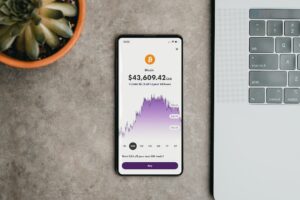Margin Requirements in Forex: How to Calculate and Stay Compliant
In the world of forex trading, margin requirements play a crucial role in determining the amount of leverage a trader can use and the potential risks involved. Understanding margin requirements is essential for any forex trader, as it directly affects their trading strategy, risk management, and overall profitability. In this article, we will dive deep into the concept of margin requirements, discuss how to calculate them, and highlight the importance of staying compliant.
What are Margin Requirements?
Margin requirements are the minimum amount of capital that a trader must have in their trading account in order to open and maintain a leveraged position. It acts as a collateral or a security deposit that covers any potential losses incurred on a trade. In essence, margin requirements serve as a safety net for both the trader and the broker to mitigate the risks associated with leveraged trading.
Different brokers have varying margin requirements, which are usually expressed as a percentage. For example, if a broker has a margin requirement of 2%, it means that a trader must have at least 2% of the total trade value in their account to open and maintain the position. Failure to meet the margin requirements may result in a margin call, where the broker will require the trader to deposit additional funds or close some positions to bring the account back to the required level.
How to Calculate Margin Requirements?
Calculating margin requirements can be a complex process due to the different factors involved, such as the currency pair being traded, the leverage chosen, and the size of the position. However, it can be simplified using the following formula:
Margin Requirement = (Trade Size * Contract Size) / Leverage
Let’s break down the components of this formula:
– Trade Size: The size of the position you want to open, usually expressed in lots. For example, a standard lot is equal to 100,000 units of the base currency.
– Contract Size: The value of one contract in the base currency. It varies depending on the currency pair being traded. For example, the contract size for EUR/USD is 100,000 EUR.
– Leverage: The ratio of the trader’s capital to the total position value. It determines the amount of borrowing power the trader has. For example, a leverage of 1:100 means that for every $1 in the trading account, the trader can control $100 in the market.
By plugging in the values into the formula, you can calculate the margin requirement for a specific trade. It is important to note that different brokers may have different leverage options, so it is crucial to understand the leverage offered by your broker and its impact on your margin requirements.
Importance of Staying Compliant with Margin Requirements
Staying compliant with margin requirements is not only essential for maintaining a healthy trading account but also for complying with the regulatory standards set by financial authorities. Here are some reasons why it is crucial to stay compliant:
1. Risk Management: Margin requirements act as a risk management tool by limiting the amount of leverage a trader can use. By keeping the margin requirements in check, traders can avoid overleveraging and potential losses that could wipe out their trading capital.
2. Avoiding Margin Calls: Falling below the margin requirements triggers a margin call, where the broker may require the trader to deposit additional funds or close positions to meet the required level. Margin calls can disrupt a trader’s strategy, incur additional costs, and lead to forced liquidation of positions at unfavorable prices.
3. Regulatory Compliance: Financial regulators impose margin requirements to ensure market stability and protect traders from excessive risk-taking. Brokers must adhere to these regulations to maintain their license and reputation. By staying compliant, traders contribute to a healthier and more transparent forex market.
4. Long-Term Success: By understanding margin requirements and incorporating them into their trading strategy, traders can build a solid foundation for long-term success. Proper risk management and compliance with margin requirements enable traders to withstand market volatility and potentially generate consistent profits over time.
Conclusion
Margin requirements are a fundamental aspect of forex trading that every trader must understand and comply with. By calculating margin requirements accurately and staying within the required levels, traders can effectively manage their risk, avoid margin calls, and contribute to a healthier and more stable forex market. Remember, compliance with margin requirements not only protects your trading capital but also ensures regulatory compliance and sets the stage for long-term success in the forex market.






